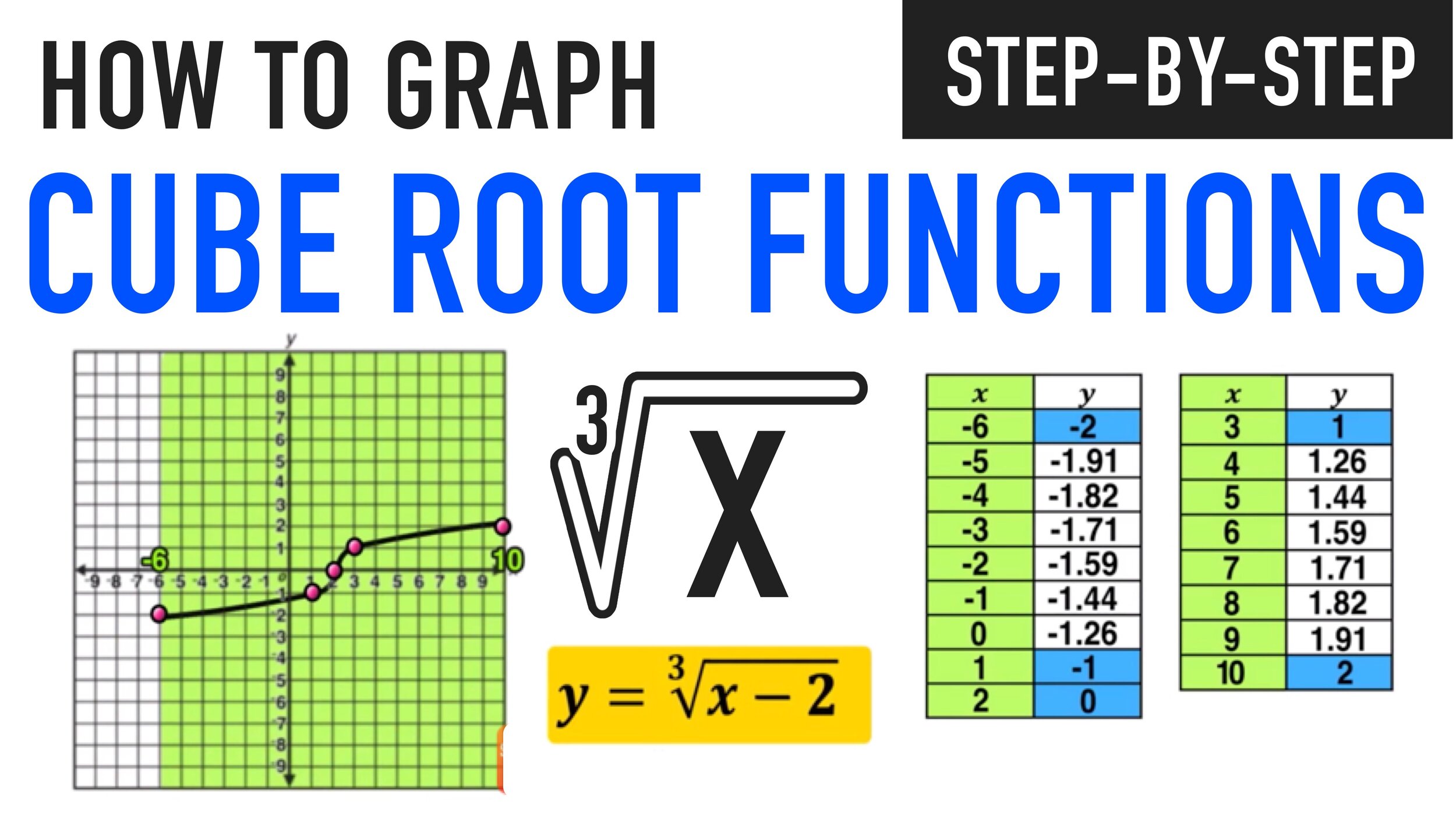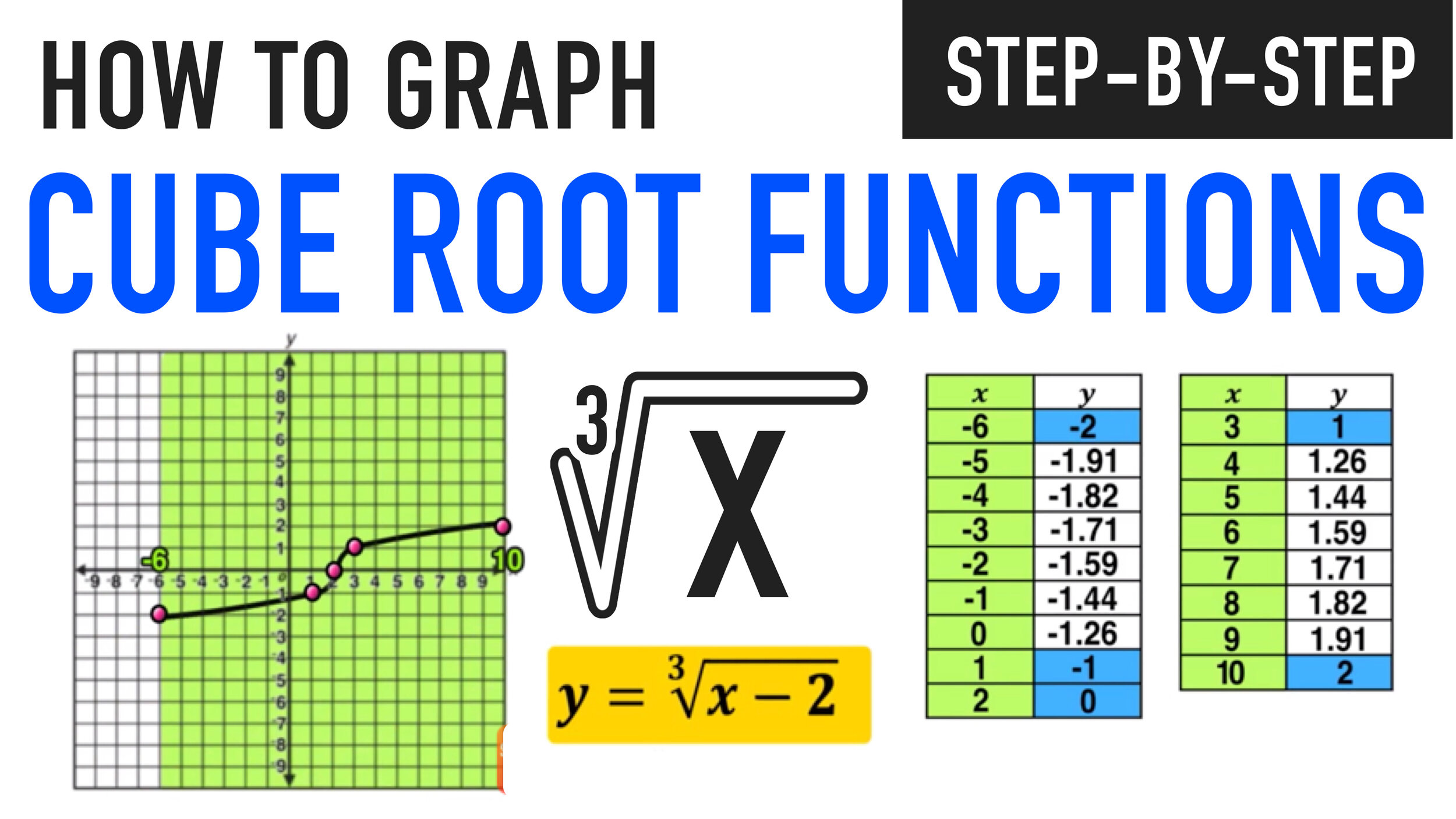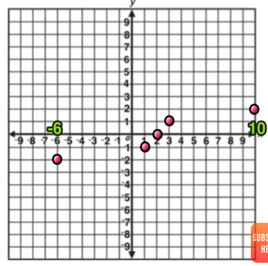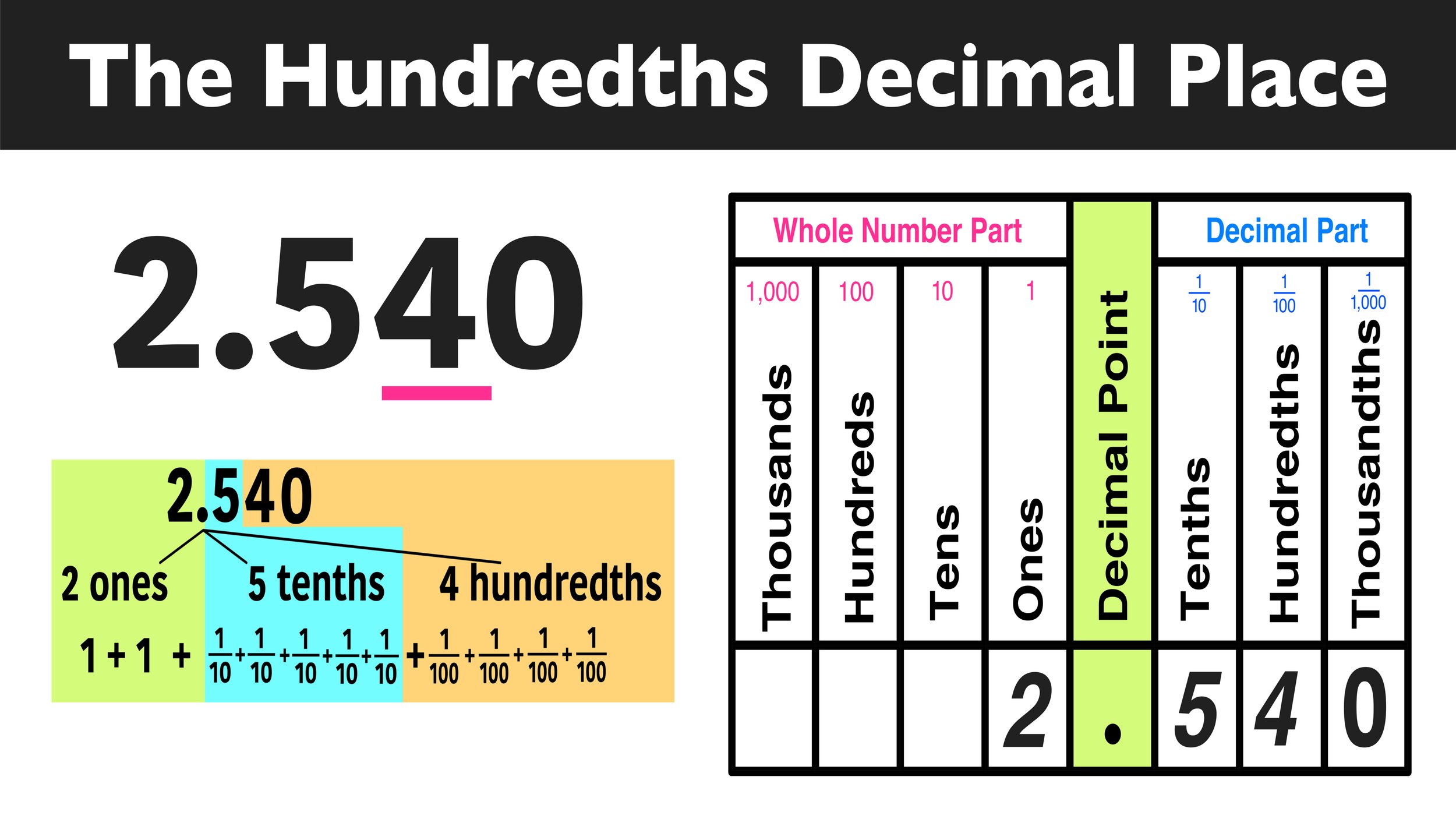How to Graph Cubic Functions and Cube Root Graphs
The following step-by-step guide will show you how to graph cubic functions and cube root graphs using tables or equations (Algebra)
Welcome to this free lesson guide that accompanies this Graphing Cube Root Functions Tutorial where you will learn the answers to the following key questions and information:
How can I graph a cubic function?
How can I graph a cube root function?
How can I graph a cubic function equation?
How can I graph a function over a restricted domain?
This Complete Guide to Graphing Cubic Functions includes several examples, a step-by-step tutorial and an animated video tutorial.
*This lesson guide accompanies our animated Graphing Cubic Functions Explained! video.
Want more free math lesson guides and videos? Subscribe to our channel for free!
Example: Graphing a Cube Root Function
On this example, you will be graphing the function over a restricted domain, but the method we use will work graphing any cubic function.
Example:
Since you are graphing this function over a restricted domain, you only care about graphing how the function behaves between -6 and 10.
Start by building a table that you can use to help yourself find the value of the y-coordinates for all of the x-values from -6 to 10 as follows:
Now you are ready to start finding points on the graph. Let’s start by finding the y-value when x=-6 (the first point on the table).
Plug each x-value into the function and solve for y!
To find the value of y when x=-6, just plug -6 in for x into the original function and solve as follows:
The cube root of -8 is -2.
Since the cube root of -8 is -2, you can conclude that when x=-6, y=-2, and you know that the point (-6,-2) is on the graph of this cubic function!
(-6,-2) is one of the points this function passes through!
You can find the rest of the y-values on the table by either:
A.) Repeating the above process for each x-value
or
B.) Using your graphing calculator to input the function into y= and generating the table as follows:
After you fill out your table, you’ll notice that some coordinate points are both integers, while others are decimals:
To graph the function, you will only plot the points that are integers only (this way, you won’t have to estimate where the decimal points lay on the graph)
Now you can go ahead and plot the following points on the graph:
(-6,-2), (1,-1), (2,0), (3,1), (10,2)
The last step is to connect the points with a curved line as follows:
This is the graph of the cubic function over the restricted domain!
You can also use your graphing calculator to verify that your graph is correct.
That’s all there is to it!
Still Confused?
Check out this animated video tutorial on graphing cubic functions!
Looking for more practice with cube roots?
Check out the following free cube root resources:
Free Cube Root Reference Guide
What is the Cube Root of…? Reference Guide
What is the Cube Root Parent Function?
Keep Learning with More Free Lesson Guides:
Have thoughts? Share your thoughts in the comments section below!
(Never miss a Mashup Math blog--click here to get our weekly newsletter!)
By Anthony Persico
Anthony is the content crafter and head educator for YouTube's MashUp Math. You can often find me happily developing animated math lessons to share on my YouTube channel . Or spending way too much time at the gym or playing on my phone.






























